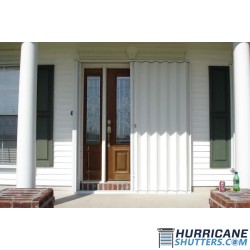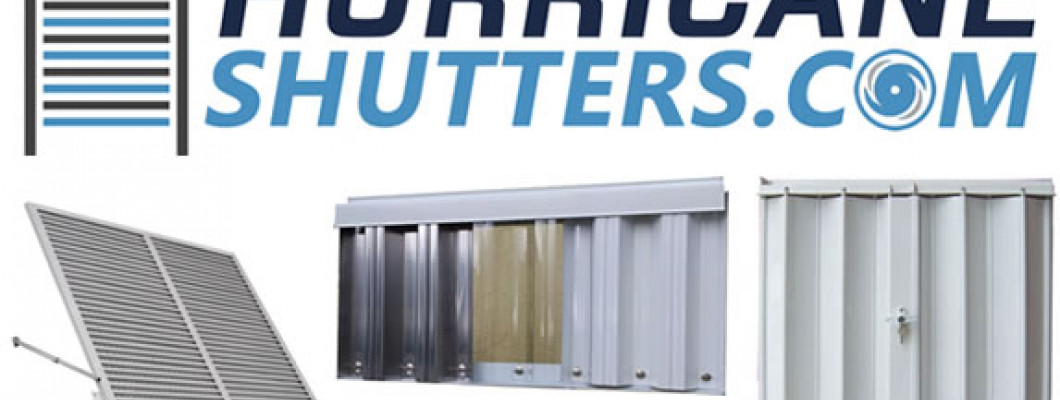
Compare Hurricane Shutter Protection Types
Hurricane shutters remain the most economical solution for most homeowners to protect window openings in a storm, although hurricane-proof glass is increasingly popular. Prepare ahead of time, say experts, particularly with panels and plywood protection. Make sure the right tools and hardware are on hand before the storm nears. Here's the lowdown on hurricane shutters and window protection.
Storm Panel Hurricane Shutters
These steel or aluminum shutters attach to the walls around windows and doors on bolts or tracks. Storm panels are corrugated, and each piece overlaps the next for maximum strength. There are several styles of storm panels to choose from.
The first style incorporates both tracks and bolts. The top of the panel is slipped into a track above the window, and the bottom of the panel is secured to bolts that are permanently attached beneath the window.
The second style uses a set of C-shaped tracks above and below the windows and doors. Bolts slide into the tracks from either side and must be manually aligned with the holes on the panels.
The third style uses only bolts permanently set into the wall beside the windows and doors. They can be loosened as the panel is hung horizontally, and screwed down to secure it.
The biggest problem with storm panels is that homeowners often don't check them when they buy a home. Many discover later that panels are missing or were cut improperly, or are too heavy to install themselves.
PROS
-- Most inexpensive of the permanent shutter systems.
-- Removable, so they don't change the look of the house when not in use.
-- Strong, and can provide excellent protection for both doors and windows.
CONS
-- Require storage, but usually stack together tightly and take up little space.
-- Can be difficult to handle; hanging can require more than one person.
-- Sometimes don't line up properly.
-- Have sharp edges.
Average cost: $7-$9 per square foot
Average storm preparation time: 15 minutes per window depending on the style.
Accordion Hurricane Shutters
These one- or two-piece hurricane shutters are housed beside the windows or doors when not in use. They unfold accordion-style to cover and protect during a storm.
PROS
-- Permanently affixed beside the windows and don't require any extra storage space.
-- Can easily be made storm-ready by one person.
-- Some models can be locked with a key and may be used as a theft deterrent.
CONS
-- Can look bulky and out-of-place on some houses. Consider the aesthetics before having them installed.
-- Glide on wheels, and have the potential to break more easily than some of the other systems.
Average cost: $15-$22 per square foot
Average storm preparation time: 15-30 minutes for entire house
Colonial Hurricane Shutters
These are two-piece louvered shutters that attach to the wall beside each window. The fold together to protect the window.
PROS
-- Are permanently affixed beside the windows and don't require any extra storage space.
-- Can easily be made storm-ready by one person.
-- Are decorative; they can beautify as well as protect your home.
CONS
-- Some types of colonials require a storm bar or center rod to lock the shutters in place. This can increase installation time.
-- Can't be used to protect doors, and must be combined with another shutter system to ensure complete home protection.
Average cost: $29-$45 per square foot
Average storm preparation time: At least 45 minutes to an hour for an entire house.
Bahama Hurricane Shutters
These one-piece louvered shutters attach directly above the windows and prop open to provide shade for the window. Bahama shutters are storm-ready when lowered and secured to the wall.
PROS
-- Permanently affixed beside the windows and don't require any extra storage space.
-- Can easily be made storm-ready by one person.
-- Provide permanent shade and privacy, even in the open position.
CONS
-- Have traditionally been weaker than other systems, but the newest models protect well.
-- Some people complain that they block too much light.
-- Design limits their use. They can't be used to protect doors.
Average cost: $24-$35 per square foot
Average storm preparation time: 15-30 minutes for an entire house.
Roll-Down Hurricane Shutters
These shutters attach above the window. They roll up and store in an enclosed box when not in use. They are lowered either manually by a hand crank or automatically by push button, and lock in place for storm protection.
PROS
-- Are permanently affixed above the windows and don't require any extra storage space.
-- Can easily be made storm-ready by one person.
-- Offer some of the best protection, and make an excellent theft deterrent.
CONS
-- Most expensive of the popular shutter systems.
-- Push-button-operated roll-down shutters require a battery backup system so the shutters can be lowered and raised during power outages.
Average cost: $30-$45 per square foot
Average storm preparation time: Minimum, probably the easiest shutter to operate.
Hurricane Impact Windows & Doors
This glass can withstand hurricane debris and eliminate the need for hurricane shutters. It costs more, especially to retrofit an older house. Modern code requirements, which already require hurricane shutters or other protections on new houses, make the glass a more practical option at the time of construction.
PROS
-- Eliminates the need for hurricane shutters.
-- The most practical hurricane glass is similar to a car windshield, with a durable plastic-like layer sandwiched between glass. The outside layers break, but the center prevents a hole.
CONS
-- Must be installed by a window contractor.
-- The frame must be replaced along with the panes to meet code.
Average cost: $45-$75 a square-foot, including new window frames and layered hurricane glass
Average storm preparation time: None.
Hurricane Fabric
-- Some newer window covers are made of a high-tech fabric that allows light and visibility while protecting from high winds effectively enough to meet hurricane codes. One brand is Armor Screen, which costs roughly $15 per square foot. These fabric screens must be installed by a dealer, not the homeowner.
-- Few, if any, types of window film as storm protection meet hurricane codes, but may give some limited protection if properly installed.
-- Less expensive panes, commonly used as thick plastic-like security windows, are about half the cost of layered panes. But they are less aesthetically satisfactory for household use because they scratch easily and fog when in contact with household cleaning chemicals.
Average cost: $10-$35 a square-foot, varies widely.
Average storm preparation time: Varies by type.
Plywood
Plywood hurricane shutters do not meet most building codes, yet many homeowners who lack more permanent storm shutter systems cover their homes with them. If you decide to use this system, it is important to install the shutters correctly.
Barrel-bolt plywood shutters
Use on concrete-block stucco homes that have windows inset at least two inches from the exterior wall.
- Buy plywood ahead of time, before the rush. Make sure it is at least 5/8 of an inch thick.
- Buy 3 or 4-inch barrel bolts, enough for one bolt for a minimum of every 12 inches of plywood.
- Cut the plywood sheets to size for each window, allowing for a snug fit in the inset.
- For larger windows or sliding doors, attach two pieces of plywood together with 2x4's or a piano hinge.
- Attach bolts to plywood, mark where you need the holes to be drilled in the concrete stucco.
- Drill holes, in marked spots in concrete stucco.
- When storm approaches, fit plywood into the inset as tightly as possible. You don't want wind to get under the shutter.
Overlapping plywood shutters
If your windows do not have a 2-inch inset, plywood shutters can overlap.
- Buy plywood ahead of time, before the rush. Make sure it is at least 5/8 of an inch thick.
- Cut the plywood sheets to size for each window, allowing for an overlap of at least 4 inches. Label each panel.
- Drill corresponding holes in the plywood and walls. Use a 1/4-inch drill bit for the wood. Use a masonry or carbide-tipped bit for concrete or stucco walls.
- Hammer 1/4-inch lead sleeve anchors – not plastic – into the holes in the wall. The anchors should be at least 2 inches long.
- When a hurricane threatens, use tapping screws at least 2 inches long to bolt the plywood in place.
Average cost: $4 - $7 per square foot
Average storm preparation time: 1 - 1 1/2 hours per window.
standard windows: measuring, installation, and considerations
HurricaneShutters.com


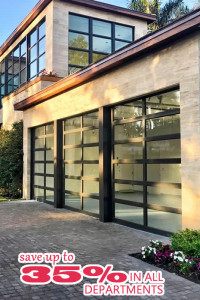

-Mount-Standard-Sizes-0-1-250x250w.jpg)
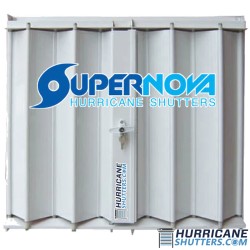
-(10ft.-Sections-5ft.-Poles-On-Center)-0-1-250x250w.jpg)
-0-1-250x250.jpg)
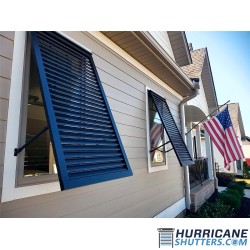
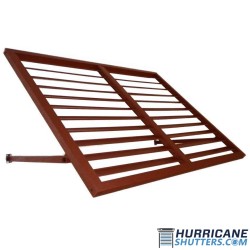
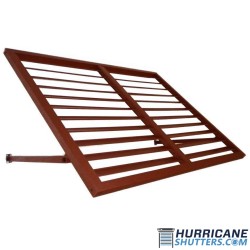
-0-1-250x250h.jpg)

